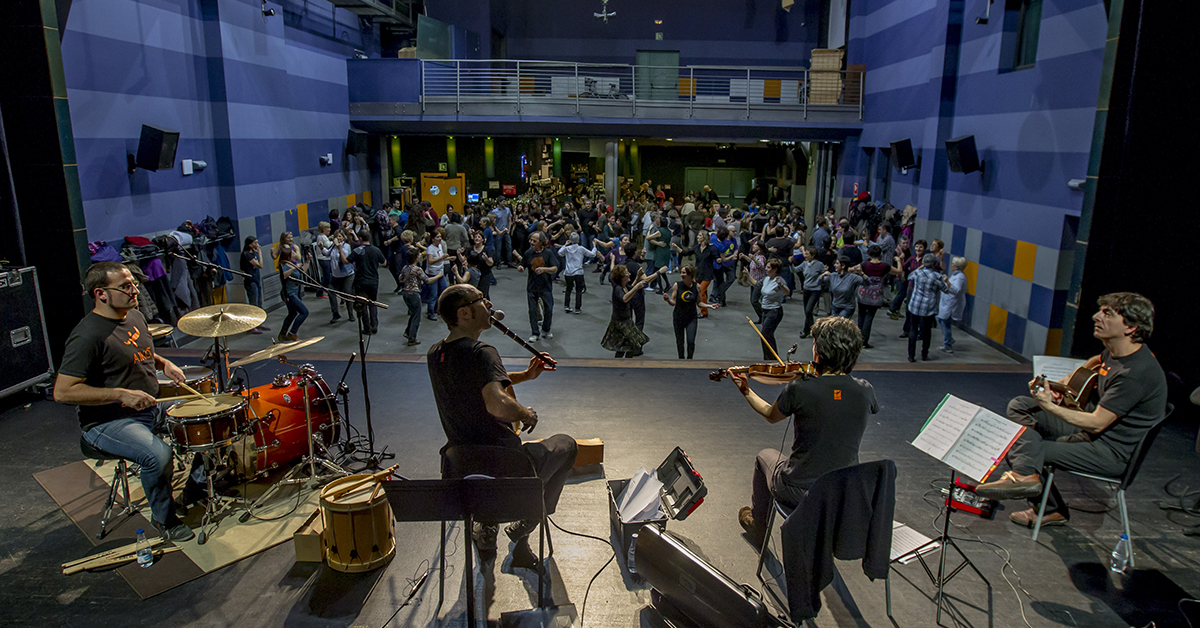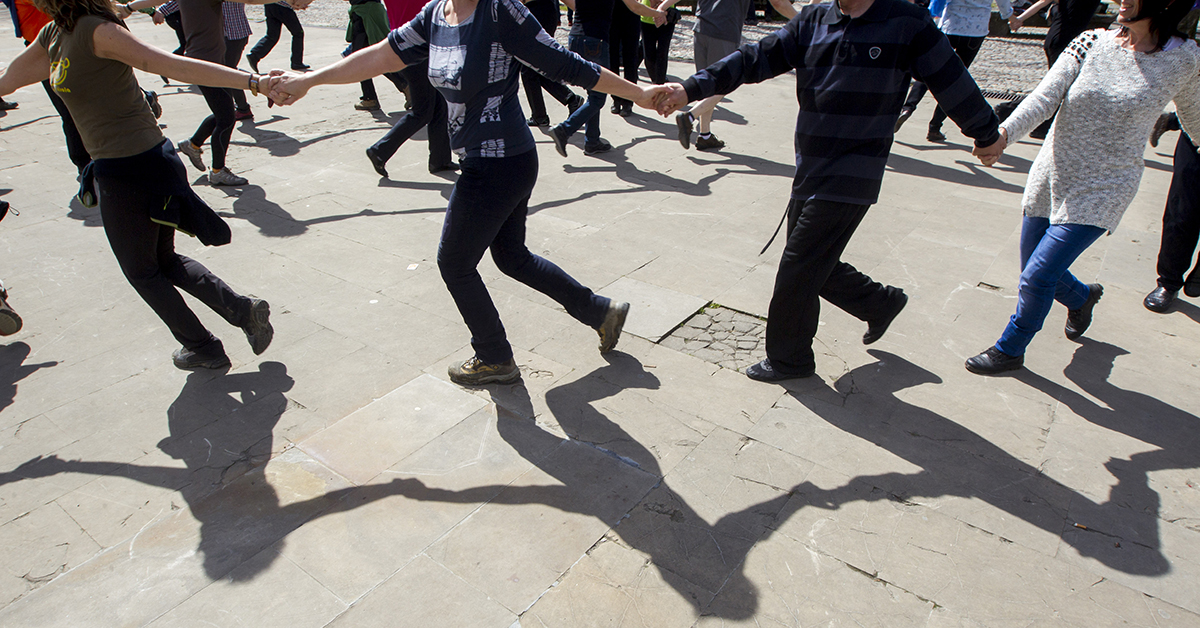Basque ethnography at a glance

Music-and-dance event enlivened by the group Aiko. Iñaki de Andrés.
St James’ Square in Bilbao. Last Saturday of the month. 21:00 hours. Following the tradition of yesteryear, a dance would be held in this charming corner of Bilbao, were it not that we are in the midst of a global pandemic. Should we place our hundred-year-old grandmother in the middle of the square, what would she think? She would probably enjoy seeing so many people dancing, but would she know how to dance with them? I would say she would not. She might feel as if she were somewhere else, far from the dear city where she grew up. And with good reason. The Bilbao of today is not the Bilbao of her youth. The city has changed, just as the way its peoples dance and the music repertoire played in its squares have changed. That is what these lines are about.
On reviewing the repertoire which was regularly performed at popular dancing events in the early and mid-twentieth century, we realize that music and dances pieces have radically changed. We must, however, bear in mind that our perception is not the same either: we are indeed used to listening to a great deal of music, have become accustomed to a specific tuning system and have developed our own ways of making music. Music has ceased to be mere entertainment. We approach it differently.
A hundred years ago, you would spend an entire evening dancing to just a few pieces. The social function of dance was very different in the old days: dance and music were the perfect means and pretext for folks to relate to others. The repertoire of the musicians of the time speaks for itself.

16 March 2013. Aiko, a group of professionals in the fields of music and dance.
Pre-war nationalism advocated what could be described as a divorce between ‘our’ dances and ‘foreign’ dances, much the same as happened with regard to other aspects (women and dance, attire, musical instruments…). ‘Basque’ folk dance began to be defined, encouraging individual or group dancing rather than partner dancing, mainly fandangos or jotas, porrusalda —literally, ‘leek soup’— or arin-arin —literally, ‘fast fast’— dances and chain dances (some dances were even banned). And that is how the model of popular dance which still survives in the 21st century developed.
The crisis which Basque folklore went through around the middle of the 20th century sustained the participation of the newly emerged dance groups and brought about the importation of their schemes. Free dances were followed by choreographed dances. It is not a matter of musicians playing for us to dance but of musicians playing music which we are familiar with and know how to dance, choreographies subsequently acquiring the prominence which music loses.
Dances are not repeated at events now. Not any more. Participants demand a great number of choreographies, all of them simple and brief. I am not speaking out of nostalgia. These are new times. Neither better nor worse. Let us not forget, though, memory, melody, improvisation and the fact that longer traditional dances occupy a very limited place in our squares.
We tend to zap between dances, very much the same as we zap through life, so we would no longer say “play it again, Sam”, but rather “play another, Tom”.
Patxi Laborda – Member of the dance group Aiko and dance teacher at Bilbao Musika
Translated by Jaione Bilbao – Ethnography Department – Labayru Fundazioa

